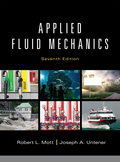
EBK APPLIED FLUID MECHANICS
7th Edition
ISBN: 8220100668340
Author: UNTENER
Publisher: PEARSON
expand_more
expand_more
format_list_bulleted
Concept explainers
Textbook Question
Chapter 10, Problem 10.65PP
A 1
Expert Solution & Answer
Want to see the full answer?
Check out a sample textbook solution
Students have asked these similar questions
Answer all the calculations questions, if you are not not expert please don't attempt, don't use artificial intelligence
Please measure the size of the following object, and then
draw the front, top and side view in the AutoCAD
(including the printing)
just one arrow
for this one
30
Question 5
Calculate the Moment about the point B in
Nx m
B
500 N
A
2 m
1.2 m
0.8 m
300 N
7
Chapter 10 Solutions
EBK APPLIED FLUID MECHANICS
Ch. 10 - Determine the energy loss due to a sudden...Ch. 10 - Determine the energy loss due to a sudden...Ch. 10 - Determine the energy loss due to a sudden...Ch. 10 - Determine the pressure difference between two...Ch. 10 - Determine the pressure difference for the...Ch. 10 - Determine the energy loss due to a gradual...Ch. 10 - Determine the energy loss for the conditions in...Ch. 10 - Compute the energy loss for gradual enlargements...Ch. 10 - Plot a graph of energy loss versus cone angle for...Ch. 10 - For the data in Problem 10.8, compute the length...
Ch. 10 - Add the energy loss due to friction from Problem...Ch. 10 - Another term for an enlargement is a diffuser. A...Ch. 10 - Compute the resulting pressure after a "real"...Ch. 10 - Compute the resulting pressure after a "real"...Ch. 10 - Determine the energy loss when 0.04m3/s of water...Ch. 10 - Determine the energy loss when 1.50ft3/s of water...Ch. 10 - Determine the energy loss when oil with a specific...Ch. 10 - For the conditions in Problem 10.17, if the...Ch. 10 - True or false: For a sudden contraction with a...Ch. 10 - Determine the energy loss for a sudden contraction...Ch. 10 - Determine the energy loss for a gradual...Ch. 10 - Determine the energy lass for a sudden contraction...Ch. 10 - Determine the energy loss for a gradual...Ch. 10 - For the data in Problem 10.22, compute the energy...Ch. 10 - For each contraction described in Problems 10.22...Ch. 10 - Note in Figs. 10.10 and 10.11 that the minimum...Ch. 10 - If the contraction from a 6-in to a 3-in ductile...Ch. 10 - Compute the energy loss that would occur as 50...Ch. 10 - Determine the energy loss that will occur if water...Ch. 10 - Determine the equivalent length in meters of pipe...Ch. 10 - Repeat Problem 10.30 for a fully open gate valve.Ch. 10 - Calculate the resistance coefficient K for a...Ch. 10 - Calculate the pressure difference across a fully...Ch. 10 - Determine the pressure drop across a 90 C standard...Ch. 10 - Prob. 10.35PPCh. 10 - Repeat Problem 10.34 for a long radius elbow....Ch. 10 - A simple heat exchanger is made by installing a...Ch. 10 - A proposed alternate form for the heat exchanger...Ch. 10 - A piping system for a pump contains a tee, as...Ch. 10 - A piping system for supplying heavy fuel oil at 25...Ch. 10 - A 25 mm ODx2.0 mm wall copper tube supplies hot...Ch. 10 - Specify the radius in mm to the centerline of a 90...Ch. 10 - The inlet and the outlet shown in Fig. 10.36 are...Ch. 10 - Compare the energy losses for the two proposals...Ch. 10 - Determine the energy loss that occurs as 40 L/min...Ch. 10 - Figure 10.38 shows a test setup for determining...Ch. 10 - Compute the energy loss in a 90 bend in a steel...Ch. 10 - Compute the energy loss in a 90 bend in a steel...Ch. 10 - For the data in Problem 10.47, compute the...Ch. 10 - For the data in Problem 10.48, compute the...Ch. 10 - A tube similar to that in Problem 10.47 is being...Ch. 10 - Prob. 10.52PPCh. 10 - Prob. 10.53PPCh. 10 - Prob. 10.54PPCh. 10 - Prob. 10.55PPCh. 10 - Repeat Problem 10.55 for flow rates of 7.5 gal/min...Ch. 10 - Prob. 10.57PPCh. 10 - Prob. 10.58PPCh. 10 - Prob. 10.59PPCh. 10 - Prob. 10.60PPCh. 10 - A 34 plastic ball valve carries 15 gal/min of...Ch. 10 - A 114 plastic butterfly valve carries 60 gal/min...Ch. 10 - A 3 -in plastic butterfly valve carries 300...Ch. 10 - A 10-in plastic butterfly valve carries 5000...Ch. 10 - A 1 12 plastic diaphragm valve carries 60 gal/min...Ch. 10 - Prob. 10.66PPCh. 10 - Prob. 10.67PPCh. 10 - Prob. 10.68PPCh. 10 - Prob. 10.69PPCh. 10 - An 8 -in plastic swing check valve carries 3500...Ch. 10 - Use PIPE-FLO software to determine the pressure...Ch. 10 - Use PIPE-FLO to calculate the head loss and...
Knowledge Booster
Learn more about
Need a deep-dive on the concept behind this application? Look no further. Learn more about this topic, mechanical-engineering and related others by exploring similar questions and additional content below.Similar questions
- Given that an L-shaped member (OAB) can rotate about OA, determine the moment vector created by the force about the line OA at the instant shown in the figure below. OA lies in the xy-plane, and the AB part is vertical. Express your answer as a Cartesian vector.arrow_forwardDetermine the magnitude of the moment created by the force about the point A.arrow_forward= MMB 241- Tutorial 1.pdf 2/3 80% + + 10. Determine a ats = 1 m v (m/s) 4 s (m) 2 11. Draw the v-t and s-t graphs if v = 0, s=0 when t=0. a (m/s²) 2 t(s) 12. Draw the v-t graph if v = 0 when t=0. Find the equation v = f(t) for each a (m/s²) 2 segment. 2 -2 13. Determine s and a when t = 3 s if s=0 when t = 0. v (m/s) 2 t(s) t(s) 2arrow_forward
- Q.5) A cylinder is supported by spring AD and cables AB and AC as shown. The spring has an at rest length (unstretched length) of 4 meters. If the maximum allowable tension in cables AB and AC is 200 N, determine (a) the largest mass (kg) of cylinder E the system can support, (b) the necessary spring constant (stiffness) to maintain equilibrium, and (b) the tension (magnitude) in each cable when supporting the maximum load found in part (a). B 4 m 3 m A E 1 m 3 m D 5 marrow_forwardDetermine the moment created by the force about the point O. Express your answer as a Cartesian vector.arrow_forward4. An impeller rotating at 1150 rpm has the following data: b, = 1 ¼ in., b2 = ¾ in., d, = 7 in., d2 = 15 in., B1 = 18", B2 = 20°, cross-sectional area A = Db if vane thickness is neglected. Assuming radial inlet flow, determine the theoretical capacity in gpm head in ft horsepower 5. If the impeller in Problem (4) develops an actual head of 82 ft and delivers 850 gpm at the point of maximum efficiency and requires 22 BHP. Determine overall pump efficiency virtual velocities V2 and W2arrow_forward
- (30 pts) Problem 1 A thin uniform rod of mass m and length 2r rests in a smooth hemispherical bowl of radius r. A moment M mgr 4 is applied to the rod. Assume that the bowl is fixed and its rim is in the horizontal plane. HINT: It will help you to find the length l of that portion of the rod that remains outside the bowl. M 2r a) How many degrees of freedom does this system have? b) Write an equation for the virtual work in terms of the angle 0 and the motion of the center of mass (TF) c) Derive an equation for the variation in the position of the center of mass (i.e., Sŕƒ) a. HINT: Use the center of the bowl as the coordinate system origin for the problem. d) In the case of no applied moment (i.e., M 0), derive an equation that can be used to solve for the equilibrium angle of the rod. DO NOT solve the equation e) In the case of an applied moment (i.e., M = mgr = -) derive an equation that can be used to 4 solve for the equilibrium angle of the rod. DO NOT solve the equation. f) Can…arrow_forwardPlease show all work step by steparrow_forwardCopyright 2013 Pearson Education, publishing as Prentice Hall 2. Determine the force that the jaws J of the metal cutters exert on the smooth cable C if 100-N forces are applied to the handles. The jaws are pinned at E and A, and D and B. There is also a pin at F. E 400 mm 15° D B 30 mm² 80 mm/ 20 mm 15° $15° 20 mm 400 mm 15° 100 N 100 N 15°arrow_forward
arrow_back_ios
SEE MORE QUESTIONS
arrow_forward_ios
Recommended textbooks for you
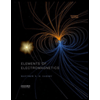 Elements Of ElectromagneticsMechanical EngineeringISBN:9780190698614Author:Sadiku, Matthew N. O.Publisher:Oxford University Press
Elements Of ElectromagneticsMechanical EngineeringISBN:9780190698614Author:Sadiku, Matthew N. O.Publisher:Oxford University Press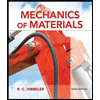 Mechanics of Materials (10th Edition)Mechanical EngineeringISBN:9780134319650Author:Russell C. HibbelerPublisher:PEARSON
Mechanics of Materials (10th Edition)Mechanical EngineeringISBN:9780134319650Author:Russell C. HibbelerPublisher:PEARSON Thermodynamics: An Engineering ApproachMechanical EngineeringISBN:9781259822674Author:Yunus A. Cengel Dr., Michael A. BolesPublisher:McGraw-Hill Education
Thermodynamics: An Engineering ApproachMechanical EngineeringISBN:9781259822674Author:Yunus A. Cengel Dr., Michael A. BolesPublisher:McGraw-Hill Education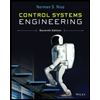 Control Systems EngineeringMechanical EngineeringISBN:9781118170519Author:Norman S. NisePublisher:WILEY
Control Systems EngineeringMechanical EngineeringISBN:9781118170519Author:Norman S. NisePublisher:WILEY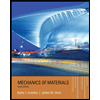 Mechanics of Materials (MindTap Course List)Mechanical EngineeringISBN:9781337093347Author:Barry J. Goodno, James M. GerePublisher:Cengage Learning
Mechanics of Materials (MindTap Course List)Mechanical EngineeringISBN:9781337093347Author:Barry J. Goodno, James M. GerePublisher:Cengage Learning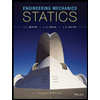 Engineering Mechanics: StaticsMechanical EngineeringISBN:9781118807330Author:James L. Meriam, L. G. Kraige, J. N. BoltonPublisher:WILEY
Engineering Mechanics: StaticsMechanical EngineeringISBN:9781118807330Author:James L. Meriam, L. G. Kraige, J. N. BoltonPublisher:WILEY

Elements Of Electromagnetics
Mechanical Engineering
ISBN:9780190698614
Author:Sadiku, Matthew N. O.
Publisher:Oxford University Press

Mechanics of Materials (10th Edition)
Mechanical Engineering
ISBN:9780134319650
Author:Russell C. Hibbeler
Publisher:PEARSON

Thermodynamics: An Engineering Approach
Mechanical Engineering
ISBN:9781259822674
Author:Yunus A. Cengel Dr., Michael A. Boles
Publisher:McGraw-Hill Education

Control Systems Engineering
Mechanical Engineering
ISBN:9781118170519
Author:Norman S. Nise
Publisher:WILEY

Mechanics of Materials (MindTap Course List)
Mechanical Engineering
ISBN:9781337093347
Author:Barry J. Goodno, James M. Gere
Publisher:Cengage Learning

Engineering Mechanics: Statics
Mechanical Engineering
ISBN:9781118807330
Author:James L. Meriam, L. G. Kraige, J. N. Bolton
Publisher:WILEY
8.01x - Lect 27 - Fluid Mechanics, Hydrostatics, Pascal's Principle, Atmosph. Pressure; Author: Lectures by Walter Lewin. They will make you ♥ Physics.;https://www.youtube.com/watch?v=O_HQklhIlwQ;License: Standard YouTube License, CC-BY
Dynamics of Fluid Flow - Introduction; Author: Tutorials Point (India) Ltd.;https://www.youtube.com/watch?v=djx9jlkYAt4;License: Standard Youtube License